What Is a Site Survey? Your Guide to Network Planning
Learn how to conduct a Wi-Fi site survey to get rid of dead zones and improve your connection speeds. From active vs. passive surveys to NetSpot tutorials, we’ve got you covered!
In the world of WiFi (also referred to as “wireless site survey” or “Wi-Fi coverage analysis”), a site survey is a systematic process of mapping out an area to find out how many networks cover it, how well a specific network covers it, or how many access points should be installed and where.
Whether you're planning a home office or a large corporate network, conducting a thorough survey can save you from dead zones, frequent connection drops, and unnecessary interference issues.
Why Is a Site Survey Important?
The process of conducting a network site survey is essential for optimizing wireless network performance and can be performed by anyone who relies on WiFi. Let's break down why site surveys are so important by looking at the issues they help prevent:
- Slowdowns: Nobody likes waiting for web pages to load or videos to buffer. Yet, that's what so often happens to those who rely on poorly optimized or completely unoptimized WiFi networks.
- Connection drops: Ever been in the middle of an important video call when suddenly, poof, you're disconnected? Site surveys help achieve consistent coverage across your entire living or office space.
- Dead zones: The term "dead zone" is used to describe areas where there's no usable WiFi signal. A thorough survey reveals these problem areas, so you can say goodbye to that one corner of your house where Instagram refuses to load.
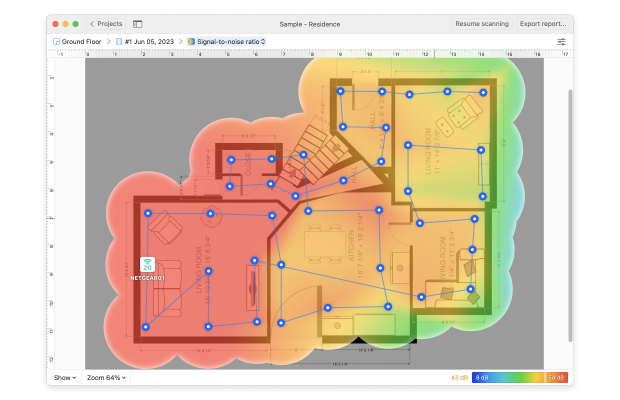
- Interference: From microwave ovens to your neighbor's competing network, interference can wreak havoc on your WiFi. Site surveys help identify other networks that are available in your area, including the channels they broadcast on, making it easy to use different channels.
- Capacity issues: In high-density areas like offices or schools, a network can become overwhelmed with too many devices. Site surveys help plan for capacity so that you have the right number of access points in the right places to meet your current and potentially even future needs.
Of course, the simple act of collecting WiFi data doesn't magically solve all these problems. However, it provides an excellent starting point for understanding your network's current state and identifying areas for improvement.
What Are the Types of Site Surveys?
There are three main distinct types of WiFi site surveys you should know about.
Passive
A passive survey involves walking through a space and collecting data about existing WiFi networks without actually connecting to them. This type of survey is useful for understanding the overall RF environment and identifying potential sources of interference.
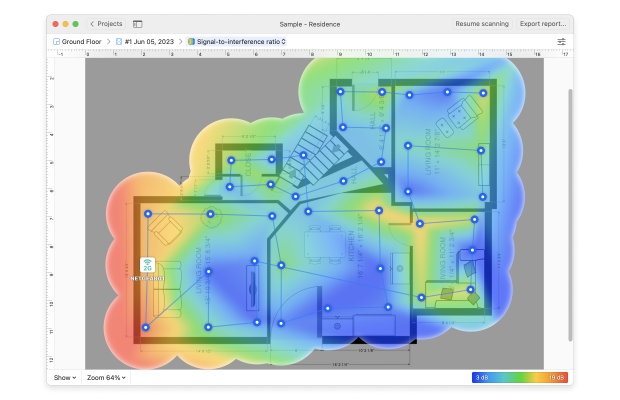
For example, a network administrator might use WiFi survey software on a laptop to perform a passive survey of an office building to discover if there isn't a rogue network operating within the premises.
Active
An active survey goes a step further by actually connecting to the network being surveyed. This allows for more detailed performance metrics to be collected, such as actual throughput.
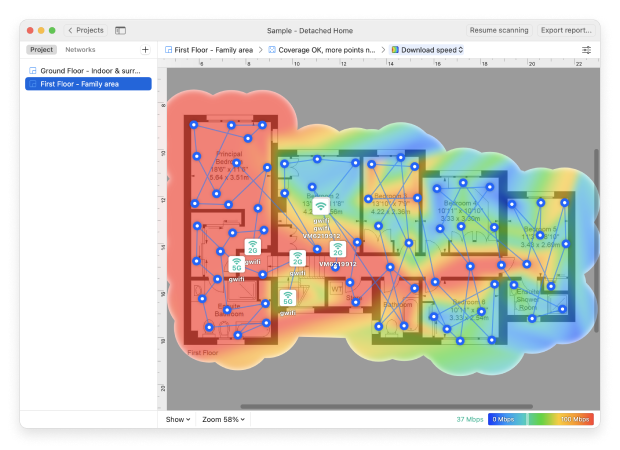
In practice, active surveys are often used to troubleshoot pesky issues. A good example would be a coffee shop owner trying to figure out why customers complain about slow Wi-Fi in certain areas. The owner might use a laptop with the WiFi site survey software to conduct an active survey. They would connect to their network and walk around the shop, stopping at various points to measure real-world performance.
Predictive
A predictive survey uses software to simulate WiFi coverage based on a floor plan and known characteristics of the space and equipment. This type of survey is useful when planning a new network installation or when physical access to a site is limited. A key advantage is that NetSpot now offers this predictive survey functionality on Android, a feature that distinctly sets it apart from many competing solutions.
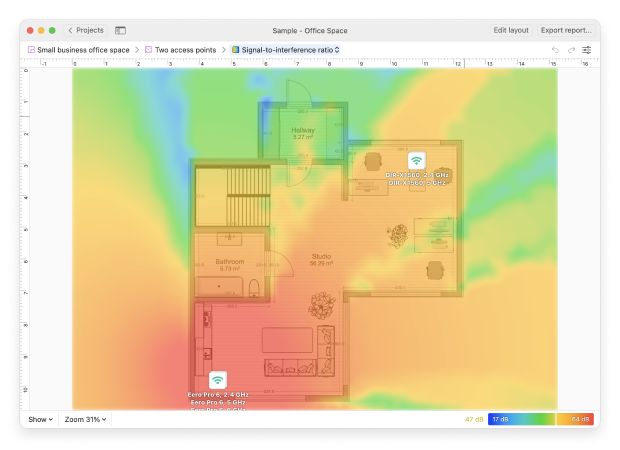
For instance, when planning WiFi deployment for a new house, the homeowner might use predictive survey software to build a digital simulation of the area and input details like wall materials, floor plans, and proposed access point models.
When Is a Site Survey Done for a Wireless Network?
The short answer is that a WiFi site survey should be done before, during, and after deployment.
- Before deployment: Use a predictive survey to plan optimal AP placement and estimate hardware needs.
- During deployment: Perform passive and active surveys to compare real-world performance with the predicted design.
- After deployment: Once users are actively on the network, survey again to fix any dead zones or interference issues that might appear under load.
Checklist before you start
Before you dive into measuring signals, it’s worth getting everything in order. Here’s a quick checklist to guide you:
- Grab a building plan or layout. Make sure you have an accurate map of the space. If there isn’t one on hand, try to sketch a rough version yourself or check an online satellite image.
- Clarify your objectives. Figure out what you’re aiming to improve — eliminating dead zones, boosting speeds, handling a larger number of users, or fixing sporadic disconnections.
- Gather your tools. You’ll need Wi-Fi survey software (NetSpot is a good option), a laptop or mobile device, any necessary power cables, and some way to take notes.
- Account for building materials. Different materials — concrete, glass, metal, thick drywall — can all affect how signals pass through, so factor this in when planning.
- Pick the right time. Try to do your survey when the network experiences typical use (for offices, that might be during regular work hours). This will give you a realistic view of performance.
- Keep track of the details. Write down exactly where you measure signals, note any sources of interference, and mark areas that might need more coverage. By covering these bases upfront, you’re less likely to miss anything crucial when it’s time to measure signal strength and overall network performance.
Tip: Read more about how to plan a WiFi deployment so that your network is set up for success from the start.
How to Do a Site Survey
For home users, a simple site survey might involve walking around with a smartphone app to identify dead zones, while business owners and enterprises might use a more advanced desktop tool to map signal strength across their premises.
Regardless of which of these camps you belong to, you can use NetSpot to quickly and easily conduct a highly accurate site survey.
NetSpot offers a user-friendly interface that’s accessible to both beginners and professionals, provides detailed heatmaps for visual analysis, and works on multiple platforms, including macOS, Windows, and mobile devices.
Here is a step-by-step guide on how to do a site survey using the desktop version of NetSpot:
Download and install NetSpot on your laptop.
Open NetSpot and switch to the Survey tab. Select “Create New…” to begin your new project.
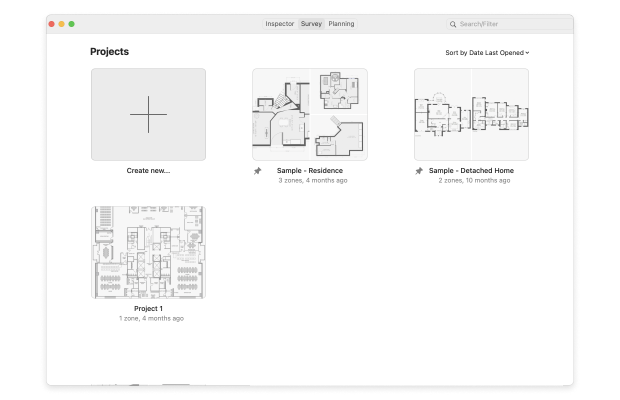
You can import a prepared floor plan or draw a new one directly in NetSpot. For uploaded plans, you’ll need to calibrate the scale.
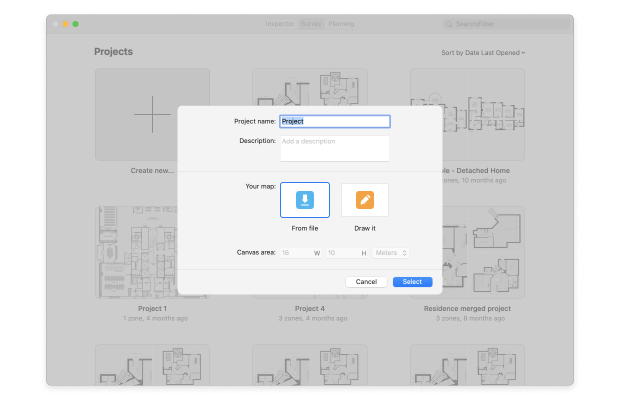
Set the sampling distance (how often you’ll take measurements) and choose whether to run active or passive scanning.
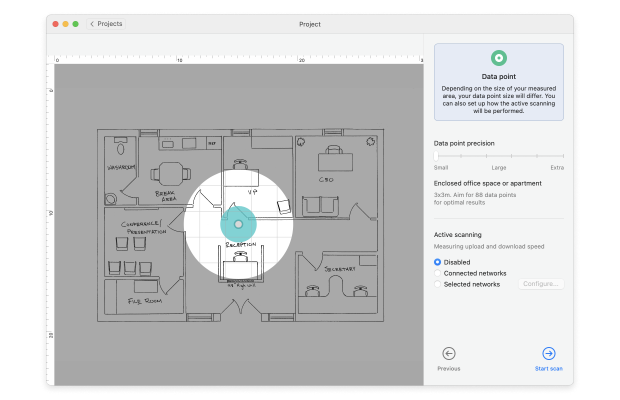
Click Start Scan and move to your first measuring point. Click on the matching location on your map. And move around your space, stopping at regular intervals to take measurements. Ensure the blue circles on your map overlap slightly for comprehensive coverage.
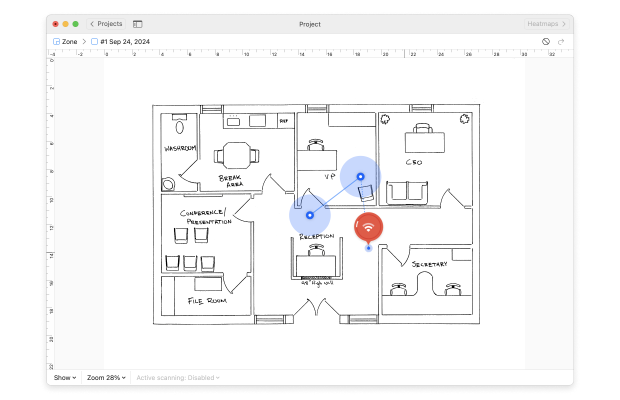
Once you’ve covered your area, click Heatmaps to view your results. You can choose different heatmap types to analyze various aspects of your network.
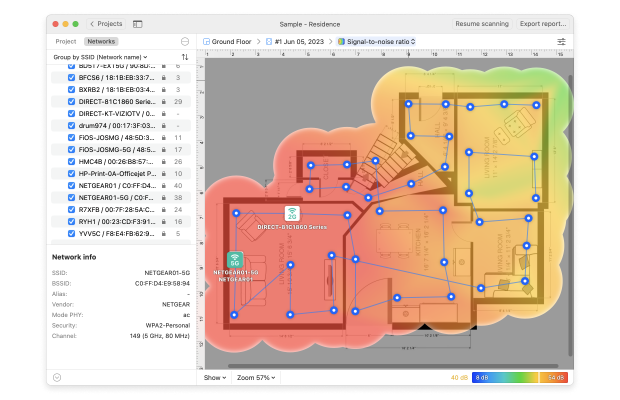
For mobile users, NetSpot offers a powerful app that allows you to build realistic WiFi heatmaps right on your iOS, iPadOS, or Android device in minutes, without additional expensive hardware. The app includes additional features like:
- WiFi analyzer for diagnosing your wireless networks and connection speed
- WiFi scanner for collecting and visualizing your WiFi data
- WiFi tester for checking your Internet speed and recording historical results
- Planning Mode (Android only) for virtually planning and simulating WiFi network deployments

Inspect, compare, survey, and analyze WiFi networks with NetSpot.
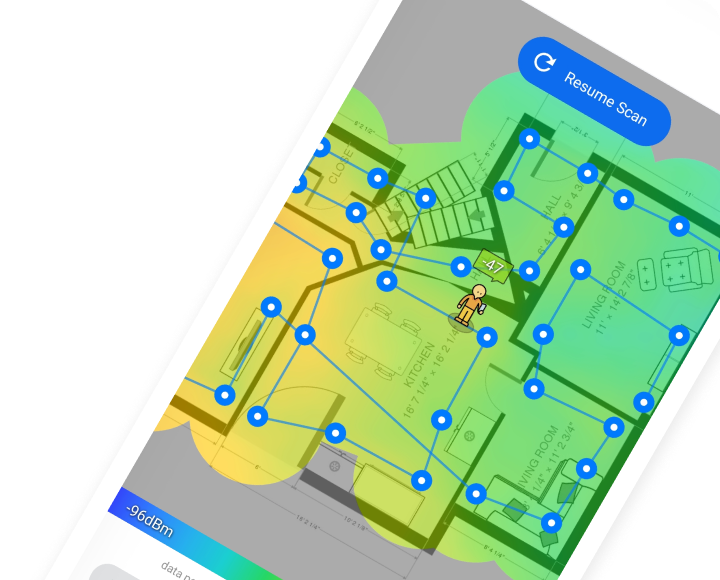
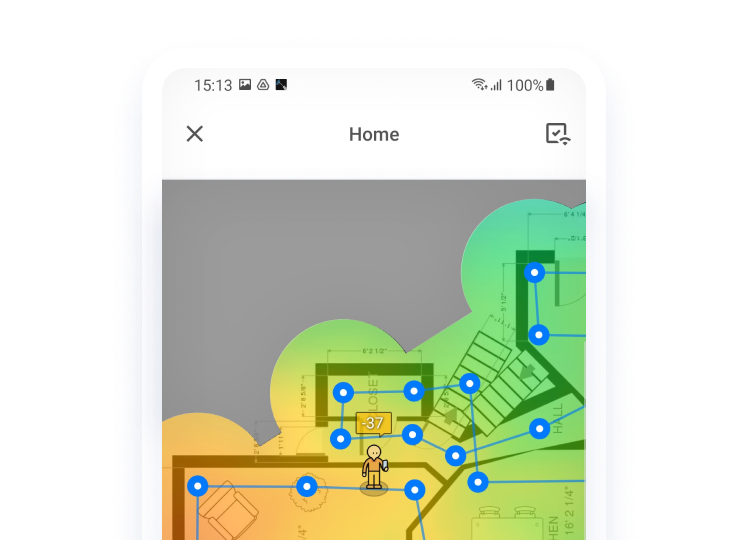
The data collected by the mobile version of NetSpot can be imported into the desktop version for additional analysis. You can continue to the following page for more information on how to perform WiFi site surveys using NetSpot.
Conclusion
A site survey is an essential process for optimizing WiFi networks, involving mapping an area to understand network coverage, identify issues, and plan improvements. There are three types of surveys: passive, active, and predictive. Surveys should be conducted before, during, and after network deployment to ensure optimal performance. Fortunately, that's very easy to do thanks to user-friendly WiFi site survey software like NetSpot, which is available on both desktop and mobile devices.
Site Survey — FAQ
You should perform a new site survey whenever there is a significant network change: installing additional access points, rearranging furniture, changing building materials, or upgrading to a new WiFi standard (like Wi-Fi 6/6E or 802.11ax). Even without major changes, many experts recommend annually rechecking coverage to ensure that environmental factors haven’t degraded performance.
Key factors that make a site survey essential before installing wireless access points in a new location include:
- To pinpoint the most effective locations for access points
- To identify potential sources of interference
- To provide comprehensive coverage without dead zones
During the site survey, use channel analysis to see which frequencies are heavily used. Opting for a less crowded channel or making use of automatic channel selection often improves performance. Additionally, upgrading to dual-band or Wi-Fi 6 equipment helps mitigate congestion in areas with many networks.
The basic procedure for performing a site survey involves:
- Installing a capable WiFi site survey tool like NetSpot.
- Creating or uploading a floor plan.
- Walking through the space, taking measurements at regular intervals.
- Analyzing the collected data using heatmaps.
- Making adjustments based on the results.
Even with high signal bars, network congestion, channel overlap, or device limitations can cause slow speeds. A site survey reveals the noise floor, channel utilization, and potential throughput bottlenecks. You may need to reconfigure channel assignments or add band-steering to boost overall performance.
Wireless surveys are useful at all stages of a network's lifecycle. They should be conducted before initial network deployment to plan optimal access point placement and coverage. During installation, surveys help verify that the coverage matches the planned design. After deployment, a survey checks real-world performance under actual usage conditions.
